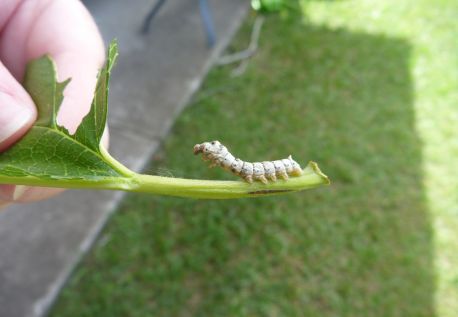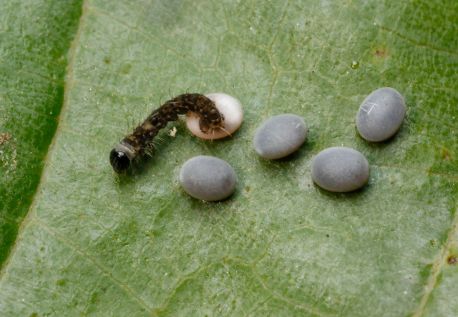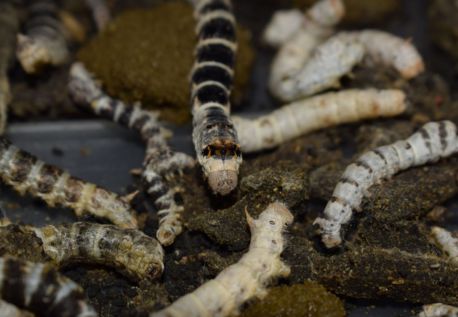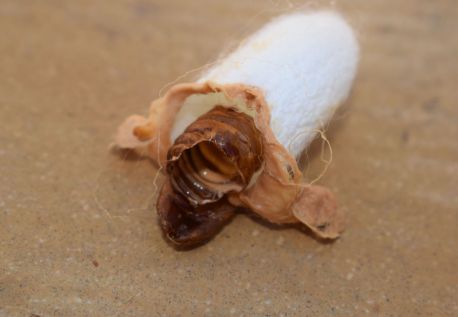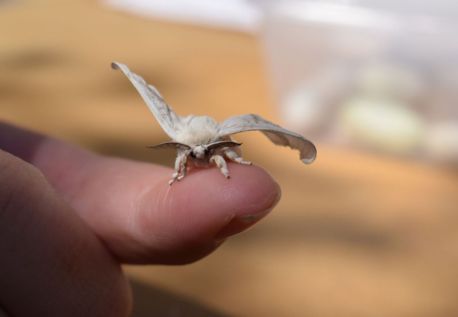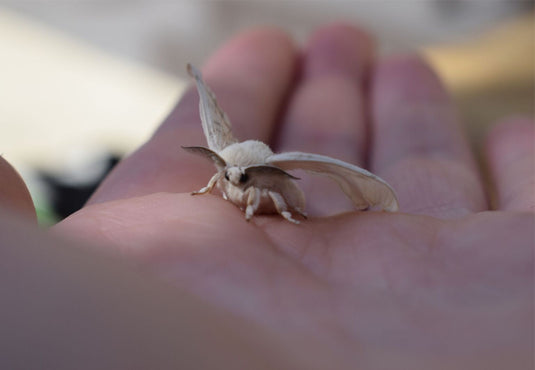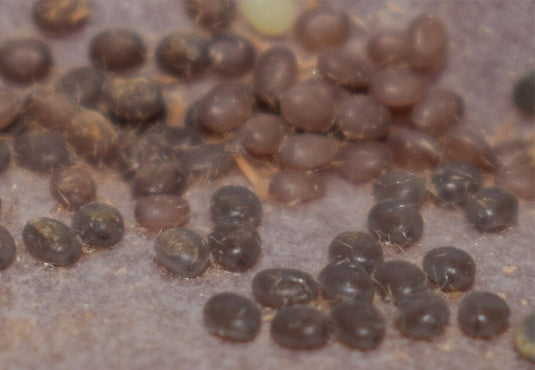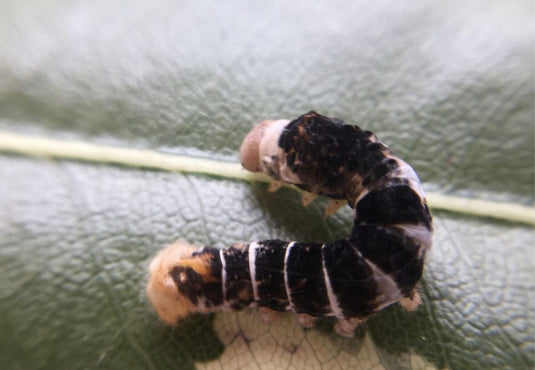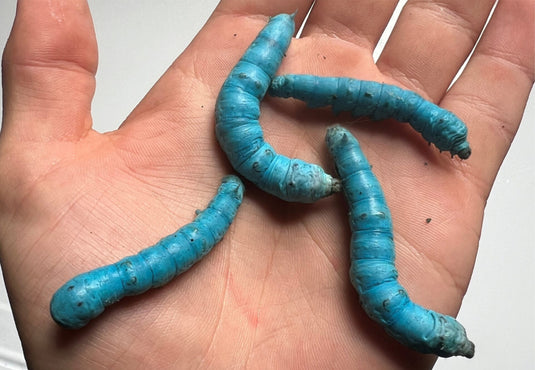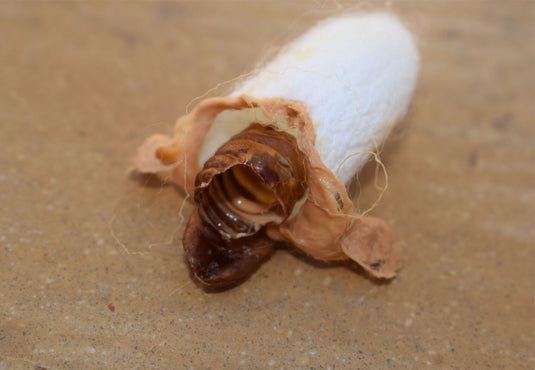Life Cycle of a Silkworm
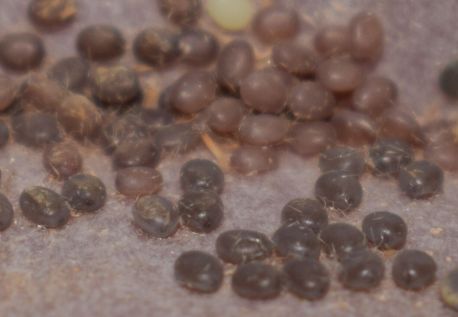
Eggs
In Australia, silkworms will naturally hatch in late July to early August, depending on the weather in your area. This timing coincides perfectly with mulberry trees regaining their leaves after losing them in winter. It is recommended to store all your eggs in a cold space, such as a fridge, to prevent early hatching due to weather fluctuations. By keeping the eggs in a cold area, you can control when they hatch, ensuring they always have a food source.
If your eggs have been placed in the fridge, they will begin developing and hatch after 10-25 days, depending on the warmth of the weather, with warmer weather causing quicker hatching.
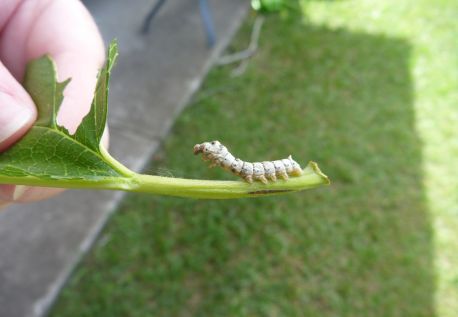
Lava / cocooning
After 25-35 days of constantly munching on mulberry leaves or chow, your silkworm will feel the urge to cocoon. Silkworms ready to cocoon are noticeable to the human eye, as they appear translucent and yellowish. Just before cocooning, the silkworm will excrete a runny fluid to clean out its system in preparation for the final stage of its life cycle. It will then ooze a tiny drop of silk for anchoring before drawing one long, continuous filament of silk by swinging its head to and fro. This process can take up to 48 hours to complete, resulting in a perfectly ovate cocoon with a continuous strand of silk up to one kilometre long.
Inside the cocoon, the silkworm will moult for the last time as it approaches the final stage of its life cycle, becoming a moth. Sometimes, silkworms exhibit unusual behaviour, such as spinning a cocoon with a companion. When this happens, the cocoon will be noticeably larger. However, if the two silkworms are of the opposite sex, the cocoon may not hatch, and you might open it to find two deceased silk moths and a bunch of eggs inside the cocoon.
Featured products

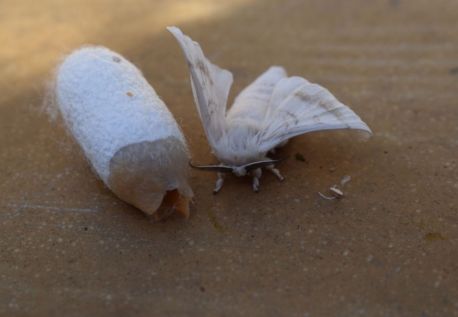
Moths
After 14 days of developing into a moth inside its cocoon, the silk moth will emerge and excrete a brownish fluid. Don’t worry; this is completely normal and a sign that the moth is cleaning out its system.
Silk moths cannot fly due to thousands of years of domestication, but male silk moths may leave their container or shoebox as they search for a female mate. Some males may appear to almost fly if dropped from a small height, but this is uncontrolled, and they will hit the ground after a few moments.
It is easy to distinguish between male and female silk moths. Females have larger abdomens, while males have smaller ones. Males also tend to be more active, constantly searching for a mate. The moth's life is brief, lasting only 5-10 days, with males generally living longer than females. Silk moths begin to search for a mate almost immediately after emerging from their cocoons. Sometimes, two moths sharing a cocoon may even mate inside it. After mating, the female moth will lay between 300-500 eggs and then die, while the male will search for another mate if it is not too old.


